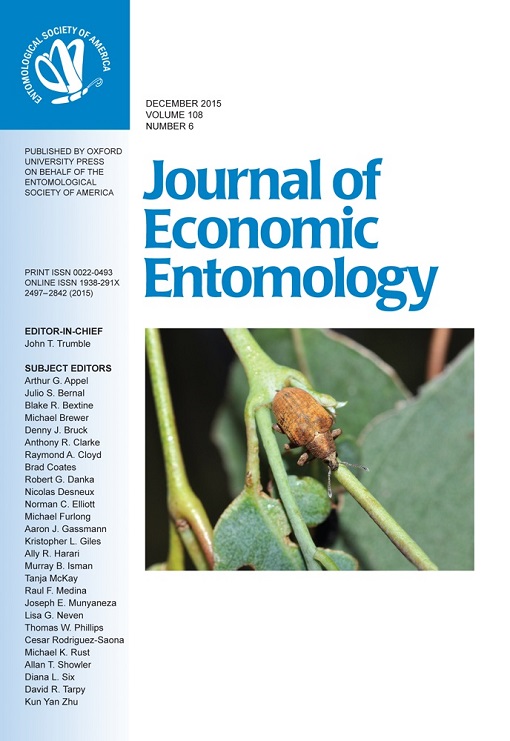The tolerance of Ceraeochrysa cubana (Hagen) pupae and eggs to 11 insecticides was evaluated under laboratory conditions, based on lethal and sublethal effects. Eggs at three ages (≤24-hold, 48- to 72-h-old, and 96- to 120-h-old) and pupae at ≤48-h-old were used. All the insecticides were considered harmless when applied at the pupal stage. Phosmet and pyriproxyfen insecticides were considered harmless to eggs irrespective of the age. Esfenvalerate was harmless to eggs at the ages of ≤24-h-old and 48- to 72-h-old. Imidacloprid SC and azadirachtin were harmless to eggs at ages of 48- to 72-h-old and 96- to 120-h-old, and thiamethoxam was only harmless to eggs at 96- to 120-h-old of age. In contrast, chlorpyrifos and malathion were harmful to eggs at the age of 96- to 120-h-old, and imidacloprid WG was slightly harmful to the three egg ages evaluated. Lambda-cyhalothrin chlorantraniliprole and lambda-cyhalothrin thiamethoxam were slightly and/or moderately harmful to all egg ages evaluated. Based on the life table parameters, the insecticides thiamethoxam, imidacloprid SC, phosmet, pyriproxyfen, and azadirachtin did not affect the net rate of reproduction (Ro) of C. cubana. Lambdacyhalothrin chlorantraniliprole decreased the Ro and increased the population doubling time (Td) independently of the egg ages evaluated. Therefore, the insecticides pyriproxyfen and phosmet are compatible with eggs of the predator C. cubana, but other insecticides should be evaluated under field conditions to verify their effects on the predator.
How to translate text using browser tools
1 December 2015
Are the Pupae and Eggs of the Lacewing Ceraeochrysa cubana (Neuroptera: Chrysopidae) Tolerant to Insecticides?
Gabriel Rodrigo Rugno,
Odimar Zanuzo Zanardi,
Pedro Takao Yamamoto
ACCESS THE FULL ARTICLE
It is not available for individual sale.
This article is only available to subscribers.
It is not available for individual sale.
It is not available for individual sale.
effects on reproduction
lacewing
life table
selectivity
survival





